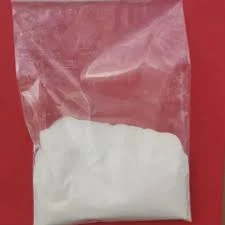Municipal Water Treatment Chemicals Ensuring Safe Drinking Water
Municipal water treatment is a critical process that transforms raw water sources into safe drinking water for public consumption. This process involves various stages, each with specific chemicals that play essential roles in making sure that the water is clean, safe, and pleasant to drink. The selection of the right chemicals is vital for effective treatment and compliance with health and environmental regulations.
Understanding Water Treatment
Before diving into the specific chemicals used, it’s important to understand the basic stages of municipal water treatment. Typically, the process includes coagulation, flocculation, sedimentation, filtration, disinfection, and distribution. Each of these stages utilizes different chemicals that serve distinct functions in purifying water.
Key Chemicals Used in Water Treatment
1. Coagulants and Flocculants Coagulation is the first stage in the water treatment process. It involves the addition of coagulants such as aluminum sulfate (alum) or ferric chloride, which help to clump together fine particles and impurities in the water. This process is followed by flocculation, where flocculants like polyacrylamide are used to further aggregate the particles into larger clusters, or flocs. These flocs can efficiently settle out of the water during sedimentation.
2. Disinfectants Disinfection is one of the most critical stages in ensuring the microbiological safety of drinking water. Chlorine is the most widely used disinfectant due to its effectiveness in killing bacteria and viruses. Other disinfection methods include the use of chloramines, ozone, and ultraviolet (UV) light. Each of these has its advantages and potential drawbacks, such as the formation of disinfection by-products in the case of chlorine. Therefore, water treatment facilities often must balance efficiency with safety in their choices of disinfectants.
3. pH Adjusters The pH level of water plays a significant role in governing the effectiveness of disinfection and the stability of the treated water during distribution. Chemical agents like sulfuric acid or sodium hydroxide are employed to adjust the pH to optimal levels, ensuring that the water is neither too acidic nor too alkaline. This adjustment is crucial for preventing corrosion of pipes and maintaining the effectiveness of disinfectants.
municipal water treatment chemicals

4. Corrosion Inhibitors Corrosion of pipes in water distribution systems can lead to the leaching of harmful metals such as lead and copper. To combat this problem, municipal water systems often use corrosion inhibitors such as orthophosphates. These chemicals create a protective layer inside the pipes, reducing the risk of contamination and protecting infrastructure.
5. Fluoride In many municipalities, fluoride is added to water systems to promote dental health. The practice of fluoridation has been endorsed by numerous health organizations due to its effectiveness in reducing cavities and tooth decay in the population. The levels of fluoride are carefully controlled to ensure safety while maximizing health benefits.
6. Taste and Odor Control Agents Sometimes, treated water may still possess undesirable tastes or odors due to the presence of organic compounds. Chemicals like activated carbon are often used in this stage to adsorb these compounds, resulting in cleaner, more palatable water. Additionally, chlorination by-products can also be addressed through proper management practices.
Environmental and Regulatory Considerations
The use of chemicals in municipal water treatment is heavily regulated to ensure that public health is not compromised. Agencies like the U.S. Environmental Protection Agency (EPA) set stringent guidelines on allowable levels of various chemicals in drinking water. Municipalities must adhere to these regulations while also considering the environmental impact of their chemical use, such as potential effects on local ecosystems.
Conclusion
Municipal water treatment chemicals are essential not only for maintaining the quality of drinking water but also for safeguarding public health. The careful selection and application of these chemicals throughout the water treatment process ensure that communities have access to safe, clean, and enjoyable drinking water. As public awareness about water quality and health continues to grow, municipalities must remain vigilant in optimizing their treatment processes and adapting to new challenges in water safety. The journey from raw water to tap water is complex but vital for the sustainability and well-being of communities worldwide.

